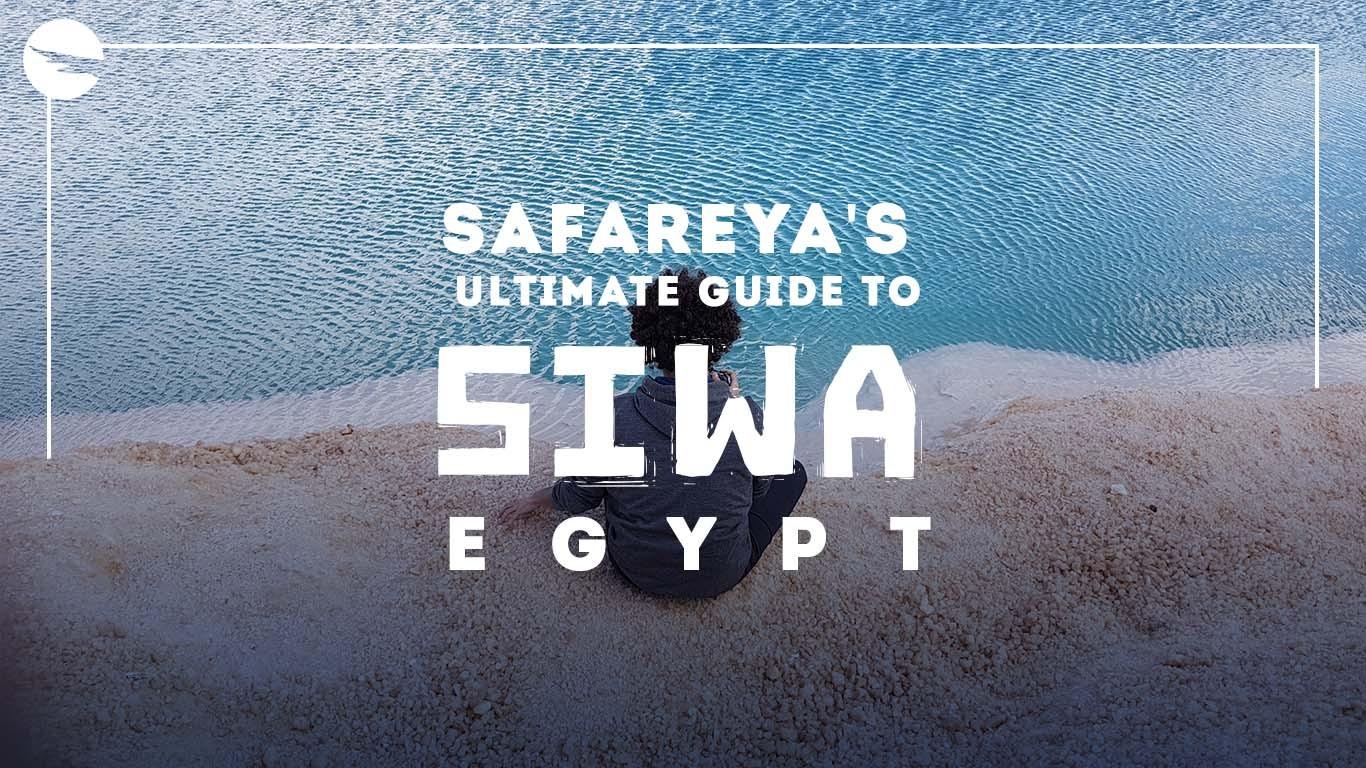
25 minute read
SAFAREYA'S ULTIMATE GUIDE TO SIWA, EGYPT
People who frequent Siwa are kind of like vegans – they’ll seize (or forcefully create) every opportunity to tell you about Siwa, all the incredible experiences they’ve had in Siwa, and all the wonderful people they could introduce you to in Siwa, all while trying to convince you that you need to go to Siwa. Now.
If you don’t have anybody of that sort in your life, allow us to fill this gaping void for you.
Advertisement
We could just go on about the insurmountable serenity as you watch the sunrise over Shali Fortress or the sunset from just about anywhere; about the generosity and gad3ana of strangers-turned-friends-turned-family; about the crystal clear salt lakes, the natural springs in the middle of the desert, and the artistically brilliant ecolodge whose owner cooks dinner for her guests every day. Instead, we’re going to equip you with all the tools to experience the beauty of the Sunset Oasis yourself.

Even though the bus drops you off at the edge of the downtown core, most city dwellers will arrive in Siwa, look around, and wonder where all the people went. And this is why people escape to Siwa to begin with – where else would you find this level of natural serenity if not in an oasis inhabited by 35,000 people who mainly work in tourism or agriculture?
While Siwa is quite obviously a desert – which means it’s really hot in the morning, freezing at night, and is best frequented between the months of October to March – it’s full of natural [often hot] springs, so bring both a jacket and a bathing suit.
The locals are Amazigh tribes whose unique traditions and lifestyle remain untainted due to the secluded nature of the oasis. That means they’re much calmer, much less hurried, and far more trusting than us city folks – they’re also genuinely friendly beyond explanation. Almost everyone in Siwa speaks Arabic, most speak fluent English, but among themselves you’ll find them speaking Siwi – a variation of the Moroccan Amazigh language, but not quite it.

GETTING TO SIWA
BUS
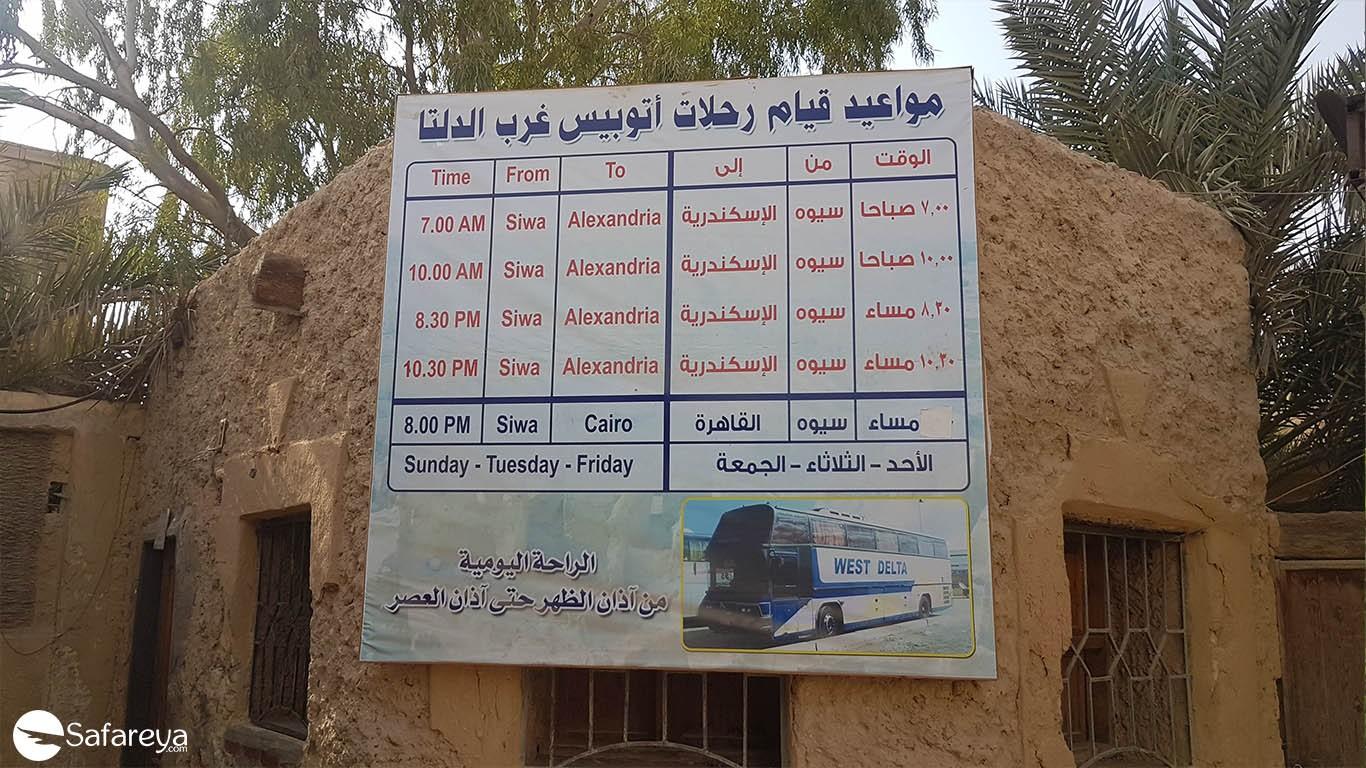
Getting to/from Siwa by bus is your most comfortable and convenient option, but it’s not necessarily a 5-star coach bus experience – do some stretches beforehand, and bring a travel pillow and a scarf because it does get cold. West & Mid Delta is the only bus company with trips to Siwa, and they operate from both Cairo and Alexandria. Bus times change frequently and without any prior notice, so make sure to confirm the departure times while booking at the station.
From Cairo, you can hop on the bus from either Abd El-Moneim Riad Station or Almaza Station on Saturday, Monday, or Thursday, and you can only book your ticket from the station itself; a one-way ticket is 230 EGP and the bus departs from Abd El-Moneim Riad Station at 10:00 PM. Brace yourselves for a 10-hour ride, give or take an hour depending on road conditions and whatever other obstacles may arise. You do get three rest stops in there, though.
The trip is a bit easier from Alexandria; you can hop on the bus from Moharam Bek or Mahatet El Raml. Unlike Cairo, the bus runs from Alexandria to Siwa four times per day, though scheduled times change often and without any given notice. Since the buses from Alexandria are also West & Mid Delta, you have to swing by the station to book your ticket.
You can only book your bus back from Siwa on the day of – early in the morning if you’re taking an AM bus to Alexandria, or after afternoon prayers if you’re taking an evening bus to Cairo or Alexandria. There will be the odd occasion where they’ll let you book your evening ticket in the morning, but this isn’t set in stone. The ticket booth is closed between noon and afternoon prayers daily (roughly 11 AM to 4 PM), so you can only book before or after those times, and there’s no pre-booking. Trust us; oh, how we’ve tried.
MICROBUS
You can only get to Siwa by microbus if you’re taking off from Alexandria; [un]fortunately, this isn’t an option for Cairenes unless you know someone local who can set up a private microbus ride for you. From Alexandria, you’ll take the Matrouh microbus from Masha’al in El-Haram, and after that you’ll take another microbus from Matrouh to Siwa. This trip takes around nine hours – one hour less than the bus ride – but the bus is more comfortable.
CAR
This seven-hour road trip is not for the faint of heart, and we suggest having a second driver to alternate with along the way. Good old Google has the exact directions, but we suggest you download the offline version because the last three hours of your route between Matrouh to Siwa don’t have any cellular reception or facilities. That final 300 KM stretch of road is also rather bumpy and broken, so plan to drive through that stretch during daylight hours. The last gas station on your route is at the entrance to Marsa Matrouh, so make sure you’re fueled up. Alternatively, you can take El-Daba’a Road, which starts in the 6 th of October.
GETTING AROUND SIWA
BICYCLE

Yeah, Siwa really is that small. You can easily get around Siwa using a bike, and it’s only about 50 EGP/day to rent a bike from one of the vendors in front of Shali. The perks of biking are that you’re not restricted in your movement – you can move at any time without waiting for a ride to pick you up, and there’s also no obnoxious car window between you and the natural beauty of Siwa.
CART
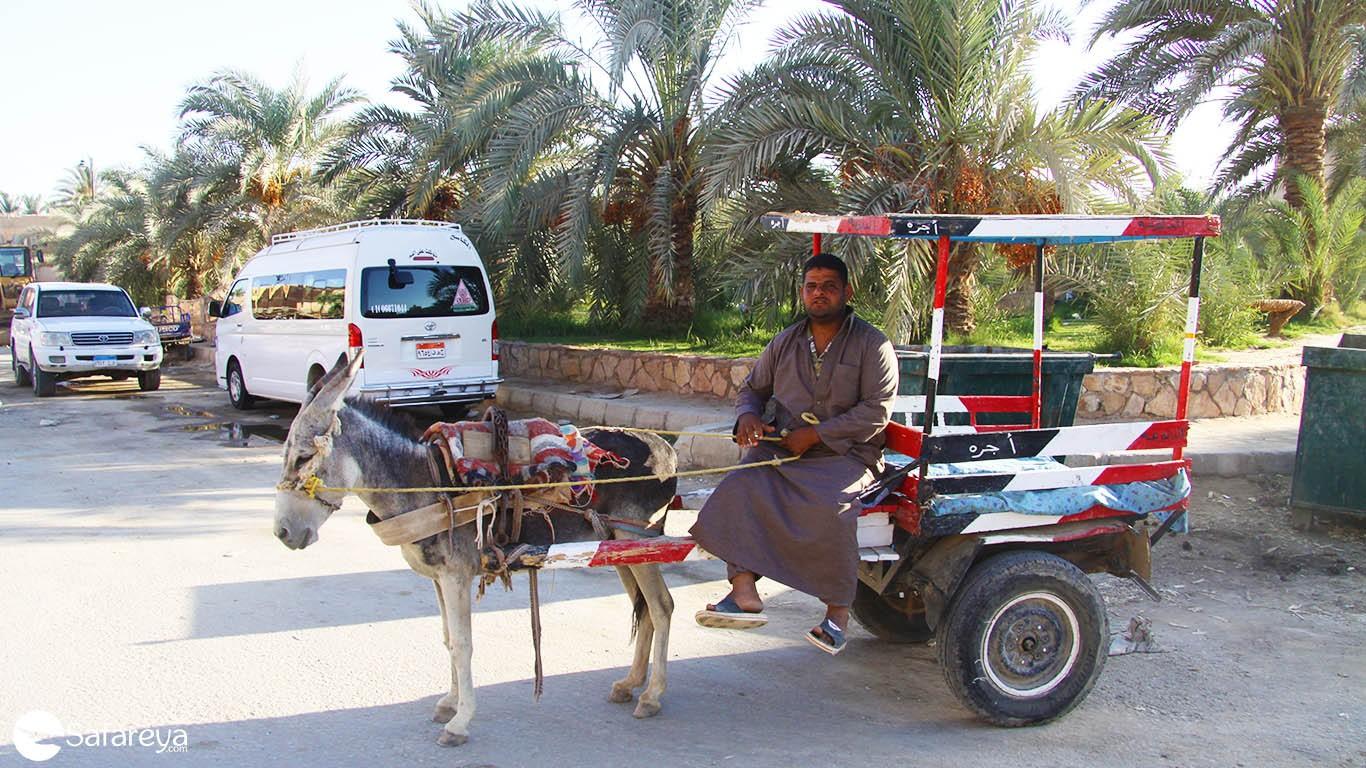
Not quite a horse-drawn carriage of Cinderella proportions, but it’ll definitely get the job done. Prices are negotiated with the driver in advance.
TUKTUK OR TRICYCLE

You have two options when it comes to tuktuks in Siwa: rent one out for a joyride, which normally costs around 50 EGP/hour or a similarly inexpensive negotiated cost for a full-day rental, or arrange with one of the drivers to take you where you need to be and pick you up later on. Prices for the latter are negotiated with the drivers, but it should be noted that they’re extremely punctual and dependable.
TUMNAYAH

Traveling as a small group? This little Suzuki can comfortably take up to 4-5 people and their belongings. They can be found all over the downtown area of Siwa, and you can negotiate the price with the driver – it’s usually rented by the hour.
MICROBUS
Microbuses take up to 14 people, which is great if you’re looking to travel as a big group and split the cost of transportation. Prices are negotiated with the driver ahead of time, and will vary depending on where you’re headed, how many hours you’ll need the microbus for, and whether or not you need the driver to wait with you at your destination.
PRIVATE VEHICLE

Private vehicles in Siwa are usually 4x4s that carry up to six people – seven, if you squeeze in tight enough – but they are significantly more expensive than all the other transportation options. Renting one could set you back between 1,000 – 1,500 EGP per day, depending on whether or not you’ll be heading out to the desert. Heading into the desert ranges between 1,200 – 1,500 EGP.

ECOLODGES
GHALIET ECOLODGE

Location: Ghaliet Contact Number: +20111 978 2111 Facebook: Ghaliet Ecolodge Average cost/night: 350 EGP
TALIST SIWA
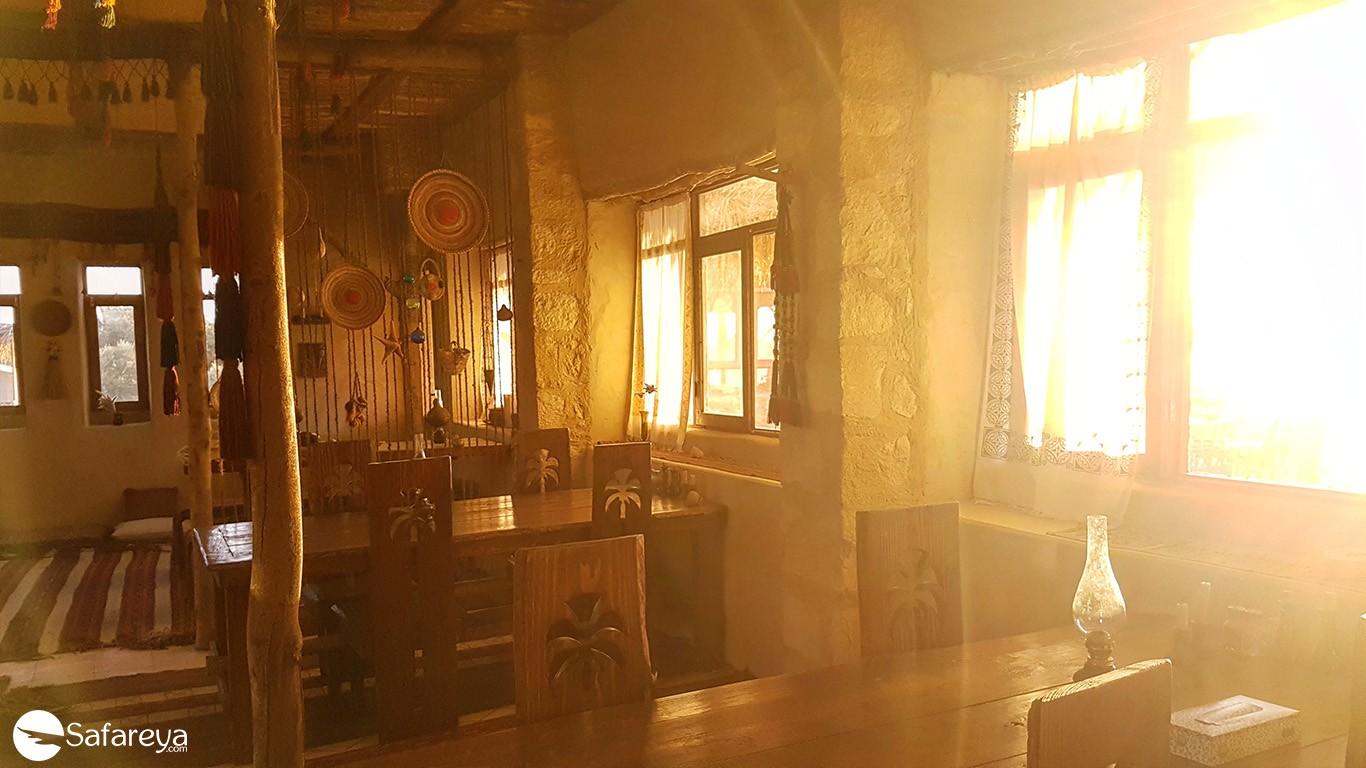
Location: Maraqi Road Contact Number: +20100 644 5881 Facebook: Talist Siwa Website: https://www.talistsiwa.com/ Average cost/night: 500 EGP
SIWA RELAX RETREAT
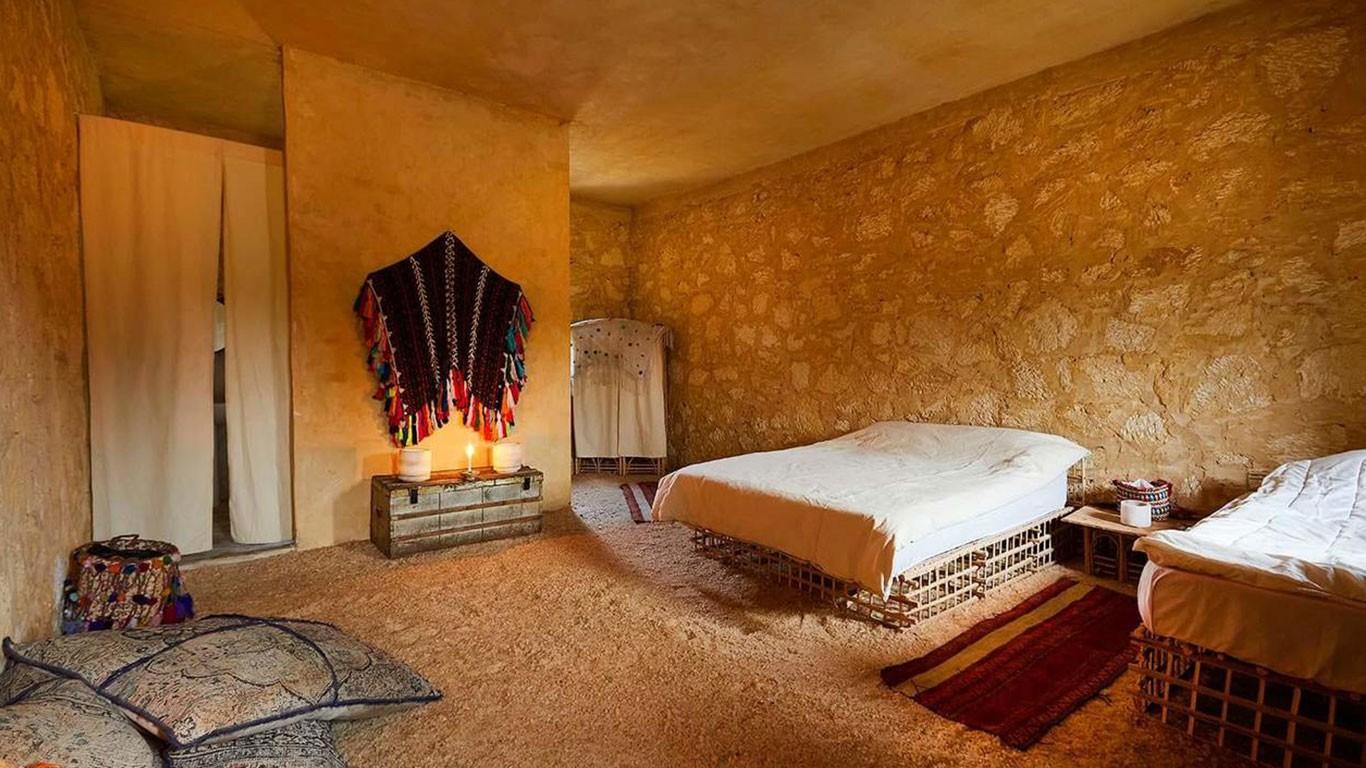
Location: Maraqi Road Contact Number: +20128 000 0274 Facebook: Siwa Relax Retreat Average cost/night: 700 EGP
TAZIRY ECOLODGE SIWA
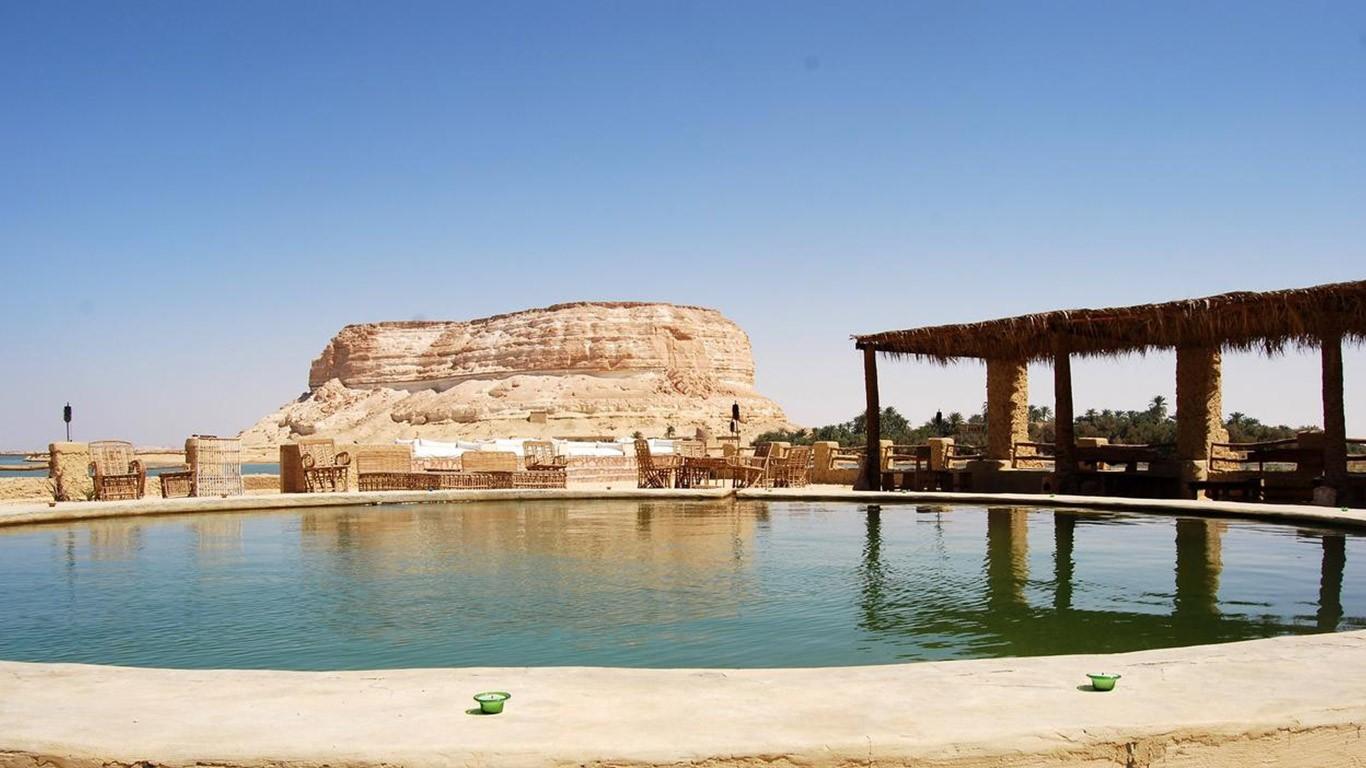
Location: Maraqi village Facebook: Taziry Ecolodge Website: https://taziry.com/ Contact Number: +20101 633 3200 Average price/night: 2,500 EGP
ADRERE AMELLAL
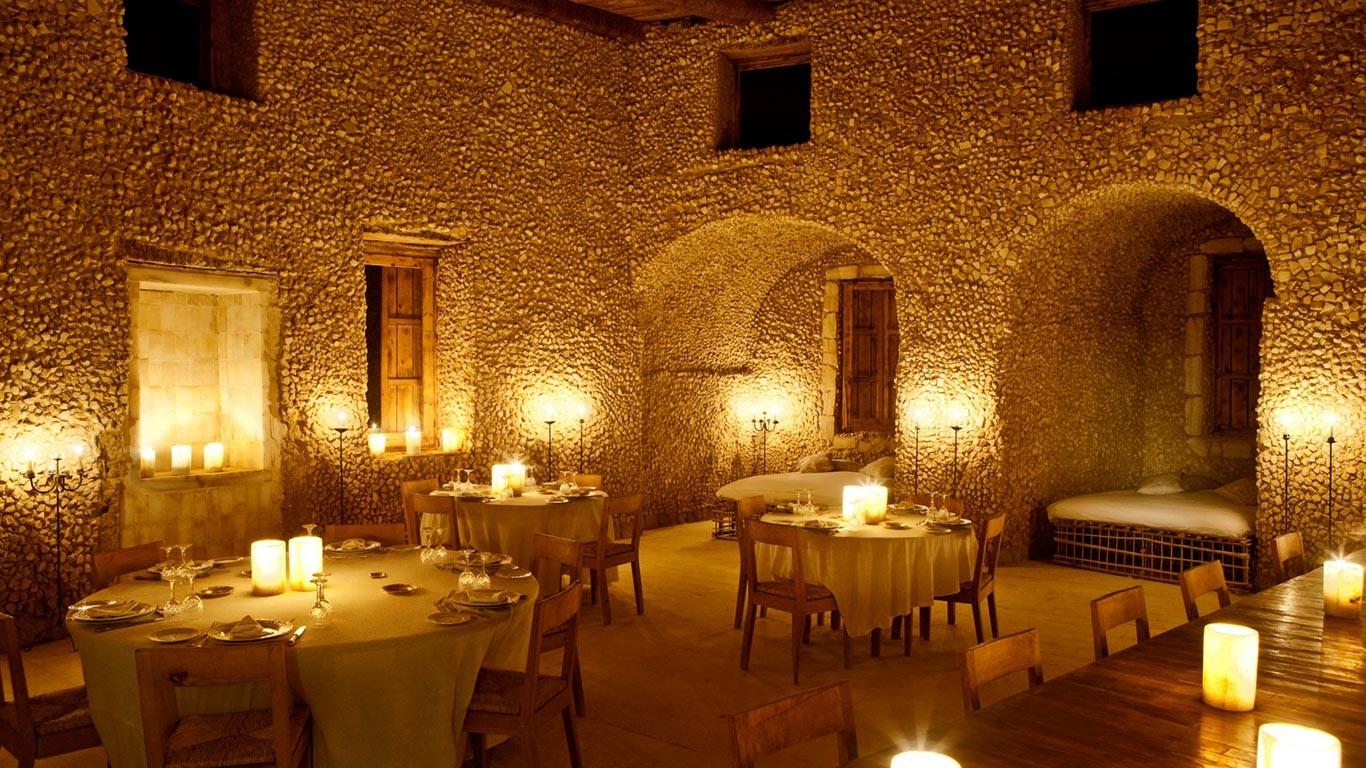
Location: Gaafar Mountain, Maraqi Road Facebook: Adrere Amellal Desert Ecolodge Website: http://adrereamellal.net/ Contact Number: +202 2736 7879 Average price/night: 6,500 EGP
HOTELS
KELANY HOTEL

Location: Shahid Azmy El-Kelany Road, Souq Square Facebook: Kelany Hotel Contact Number: +2046 4600274 Average price/night: 180 EGP
SIWA INN HOTEL

Location: Raml El-Hadadin, next to the power station Facebook: Siwa Inn Hotel Contact Number: +20100 333 2042 Average price/night: 250 EGP
SIWA GARDENS HOTEL

Location: Ein El Arayes Street Facebook: Siwa Gardens Hotel Website: http://www.siwagardens.com/ Email Address: reservations@siwagardens.com Contact Number: +20115 842 1897 Average price/night: 380 EGP
SHALI LODGE HOTEL
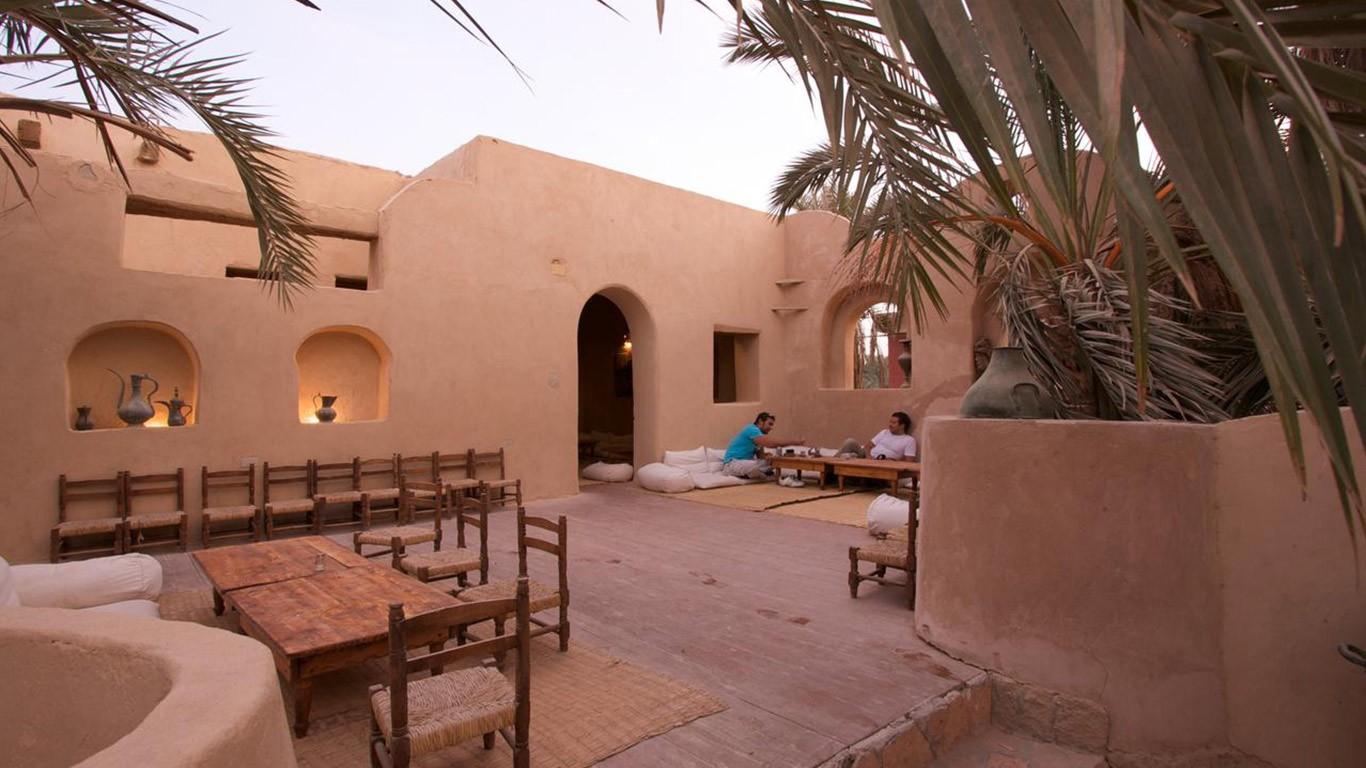
Location: Souq Square Facebook: Shali Lodge Hotel Contact Number: +2046 4601299 Average price/night: 400 EGP
ALBABENSHAL

Location: Souq Square Facebook: Albabenshal Hotel Siwa Contact Number: +2046 4601499 Average price/night: 400 EGP
TAGHAGHIEN ISLAND RESORT
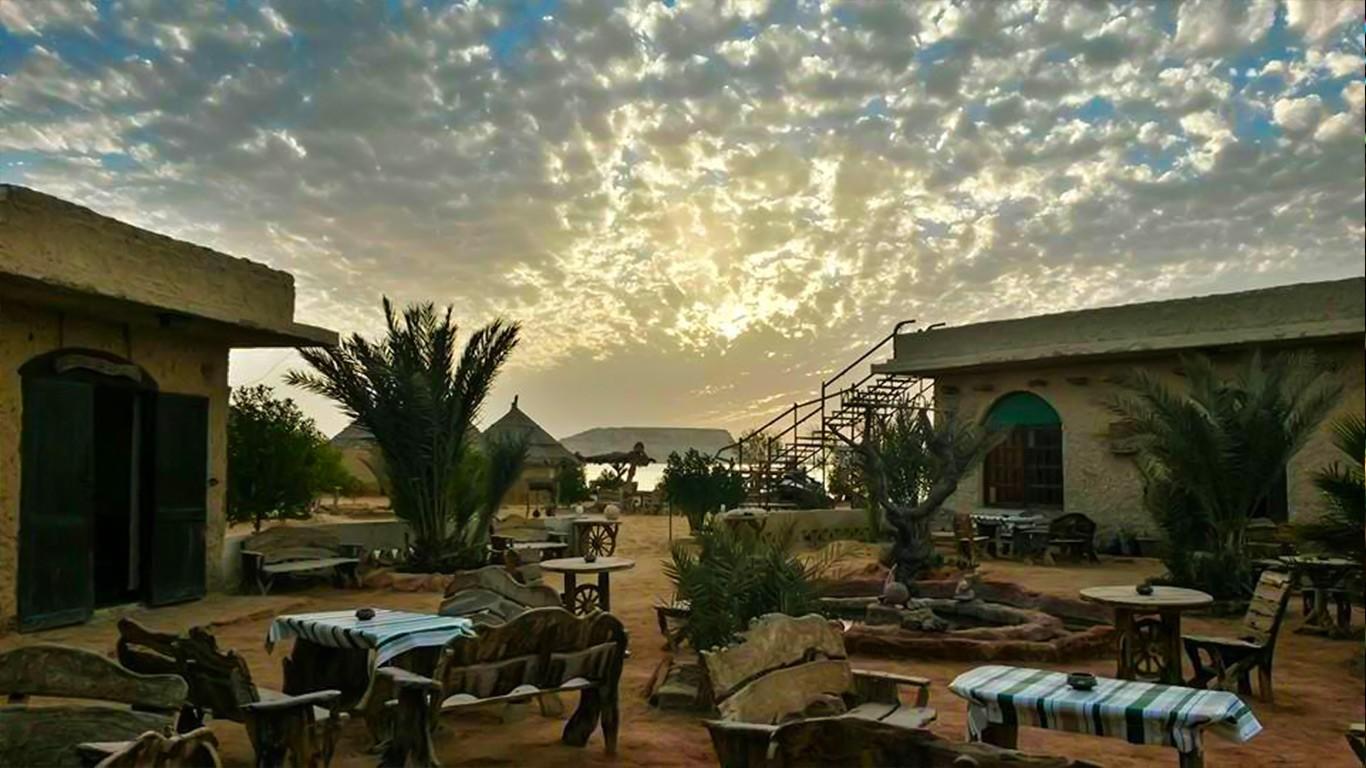
Location: Taghaghien Island Facebook: Taghaghien Island Website: http://www.taghaghienisland.com/ Contact Number: +20128 999 1991 Average price/night: 550 EGP
DEHIBA RESORT

Location: Maraqi Road Facebook: Dehiba Resort Website: http://www.dehibaresort.com/ Contact Number: +20100 088 3388 Average price/night: 630 EGP
NOUR EL WAHA HOTEL

Location: Siwa Oasis Facebook: Nour Elwaha Hotel Email Address: aloushsiwa@gmail. Average price/night: 720 EGP
SIWAN HOMES
SIWI HOUSE IN SHALI
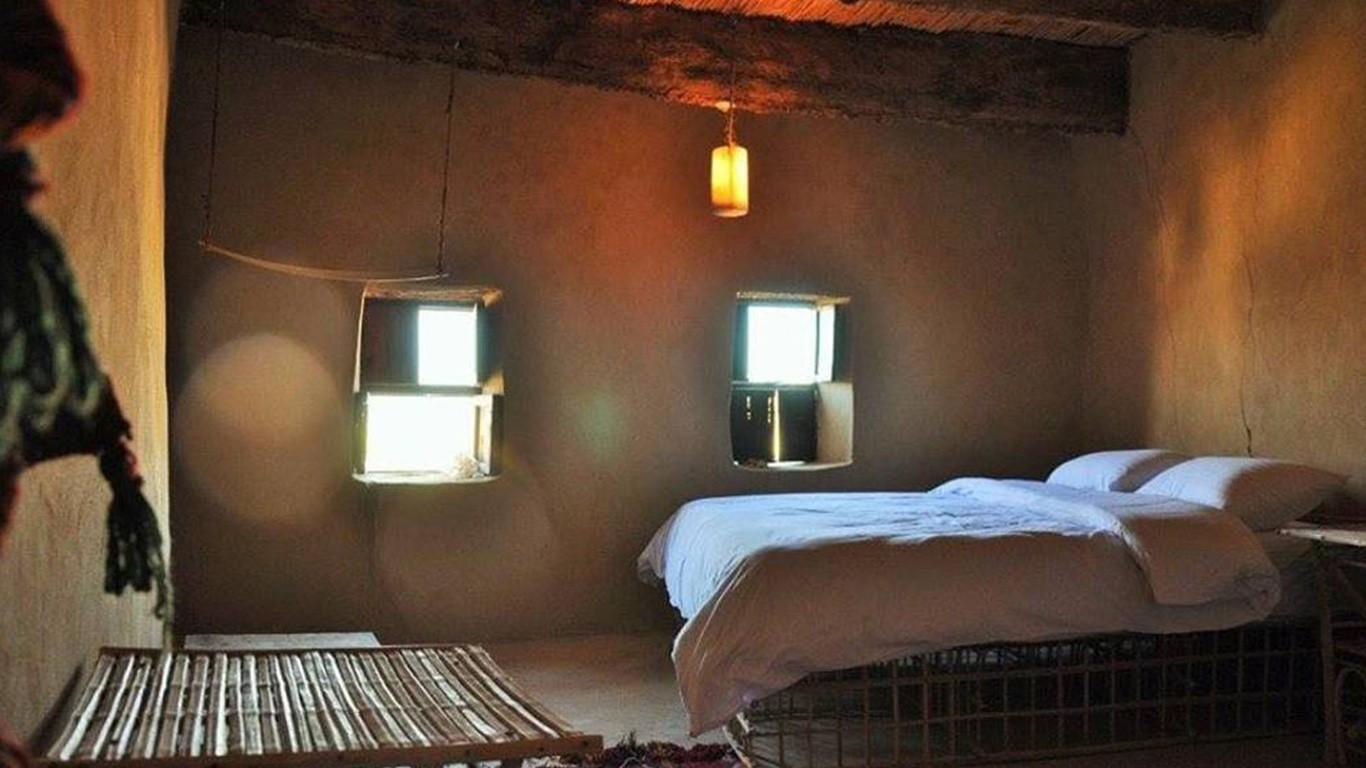
Location: Shali Fortress Average price/night: 550 EGP Booking: Airbnb
FAHMI'S GARDEN

Location: Downtown Siwa Average price/night: 200 EGP Booking: Airbnb
TRADITIONAL SIWAN ECO HOUSE

Location: Downtown Siwa Average price/night: 2,400 EGP Booking: Airbnb * Based on single person occupancy during high season.

Siwa isn’t Dubai or Beirut, so if your plan is to barhop your way into a drunken stupor then you’re in the wrong place. Mind you, there are plenty of late-night desert jam sessions and dance parties, but they just look a little different. Siwa’s best known for its stunningly serene natural landscape – desert adventures, countless places to swim, and mesmerizing sunsets no matter where you are.
ART, CULTURE, AND HISTORY
While most people come to Siwa for its natural landscape, the sunset oasis is full of historical landmarks and rich cultural practices worth discovering. There's plenty to explore if you're a fan of visiting ancient sites, but there are also cultural heritage sites like the Siwa House Museum and the Siwa Centre for Documentation of Cultural and Natural Heritage that offer a more curated cultural experience. Siwa House Museum is precisely that – a heritage museum resembling traditional Siwan homes made of mudbrick and palm logs – that walks you through the history, culture, traditions, and heritage of the people of Siwa manifest through crafts, handmade products, art, music, poetry, and sculptures.
TEMPLE OF THE ORACLE OF AMUN
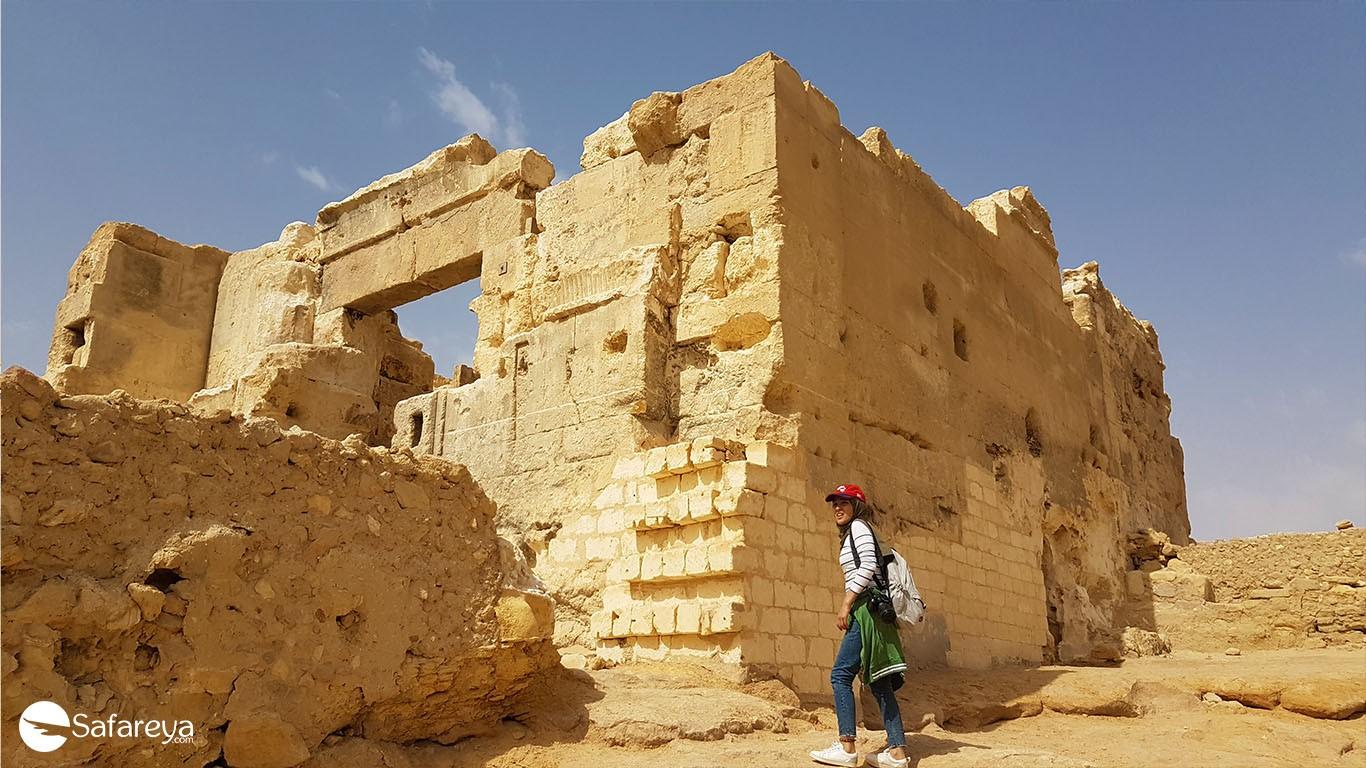
One of Siwa’s most famous landmarks – and a spot with a stellar view of all of Siwa – the Temple of the Oracle of Amun was built back in the 26 th Dynasty and has seen visits by historic greats, most notably Alexander the Great himself. The people of Siwa once lived in the temple but, as a result of repeat attacks by neighboring Arabs and Bedouins, they fled and created a fortress for themselves: Shali Fortress. The temple was later damaged by heavy rainfall in 1926, but its remains are still an attraction for history buffs.
SHALI FORTRESS
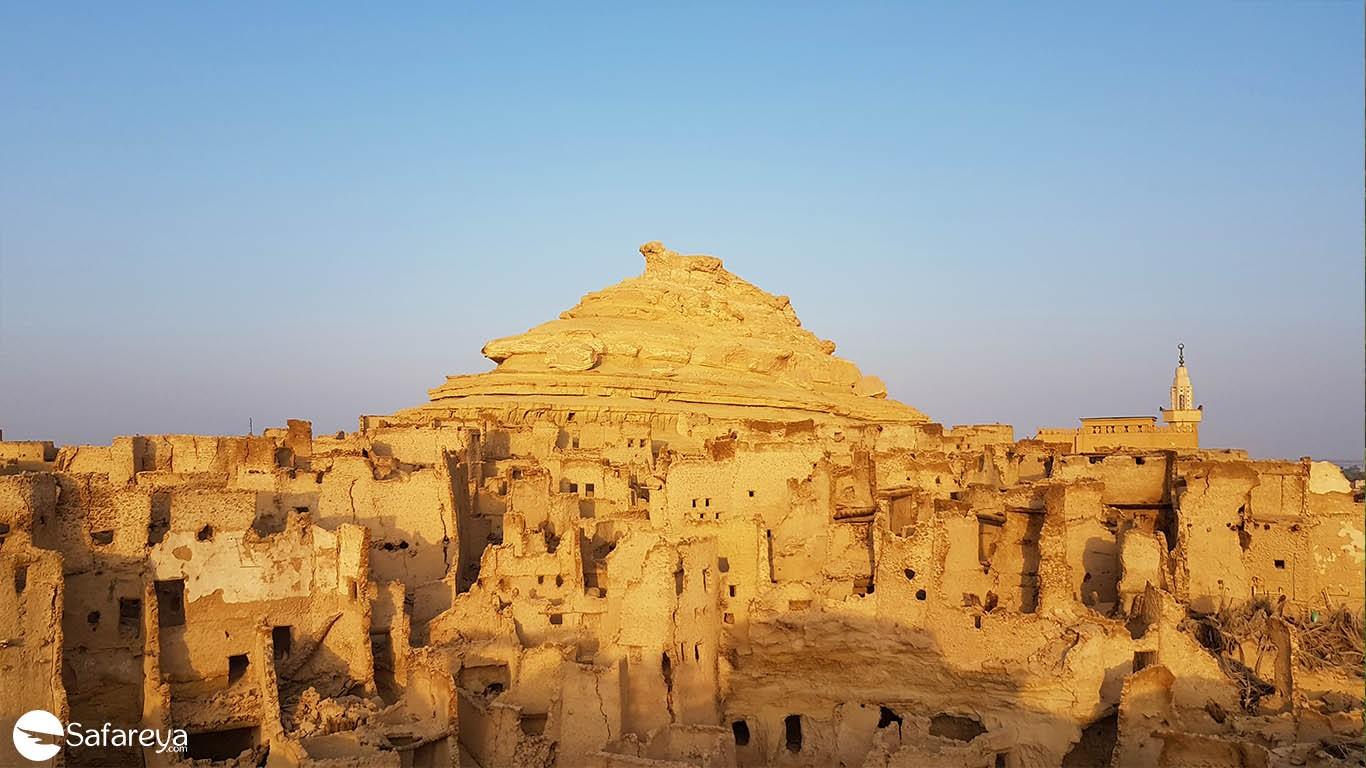
Shali Fortress is where the people of Siwa lived after fleeing from the Temple of the Oracle of Amun. To protect themselves, they built a city atop a mountain, fencing it and creating a single entry gate called Albabenshal (meaning 'the city gate’). Once peace was restored, they began to expand into what’s currently the Siwan core. Unfortunately, heavy rainfall flooded Shali, but it’s currently being restored and will hopefully take on its original structure later this year.
UM EBEIDA TEMPLE
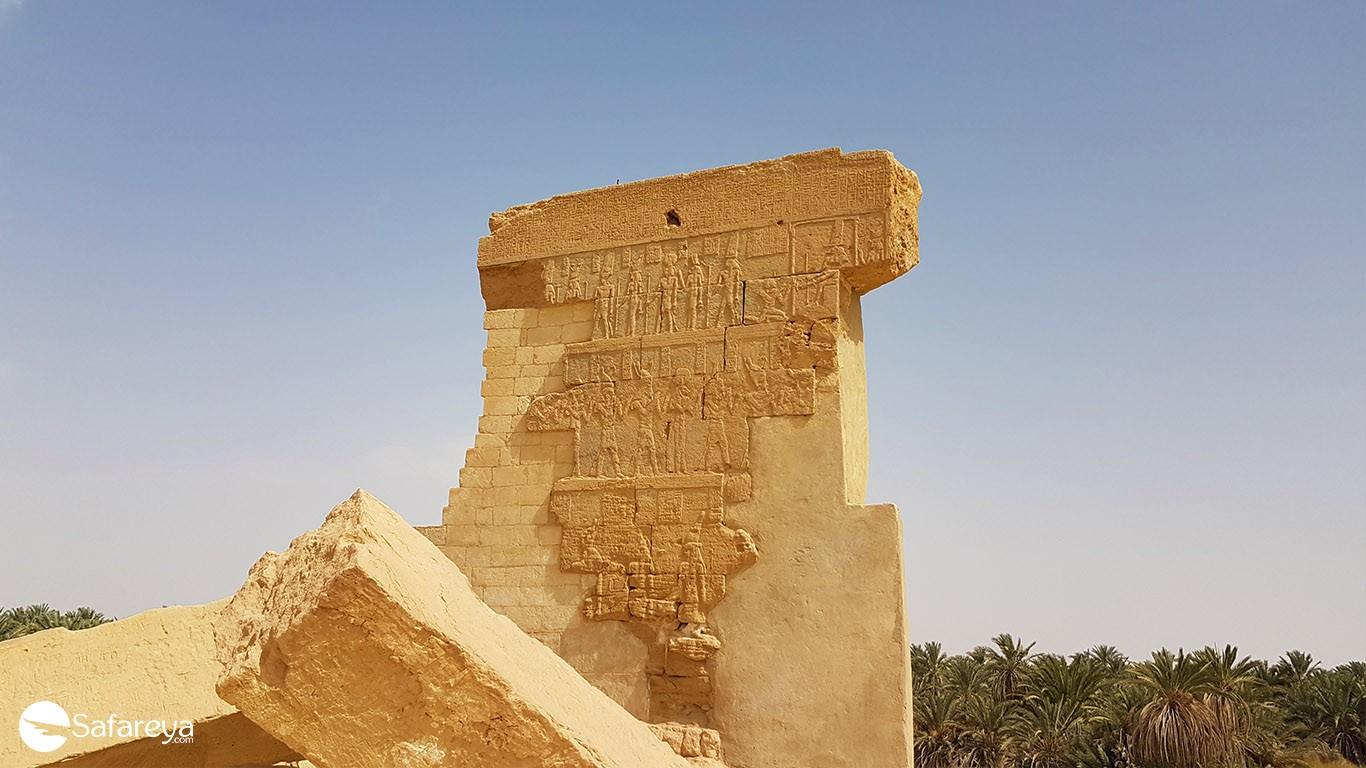
Amun was a pretty big deal in Siwa back in the day; Um Ebeida Temple is also dedicated to Amun, though it was destroyed significantly more than its counterpart and little of it remains. If it seems familiar, it’s because this is the same temple where they shot in the series Wahet El Ghroob.
FOSSIL SITE AT THE GREAT SAND SEA
FOSSIL SITE AT THE GREAT SAND SEADespite being known as the Great Sand Sea because it’s about 800 KM of sand dunes in the eastern Sahara, this area was once – far too many years ago – a body of water. That’s why if you ask your guide about the fossil site you’ll end up in a particular spot full of fossils of gigantic whales, shells, and petrified starfish, all buried in the sand. If you’re not a massive history buff, this can get pretty boring pretty quickly.
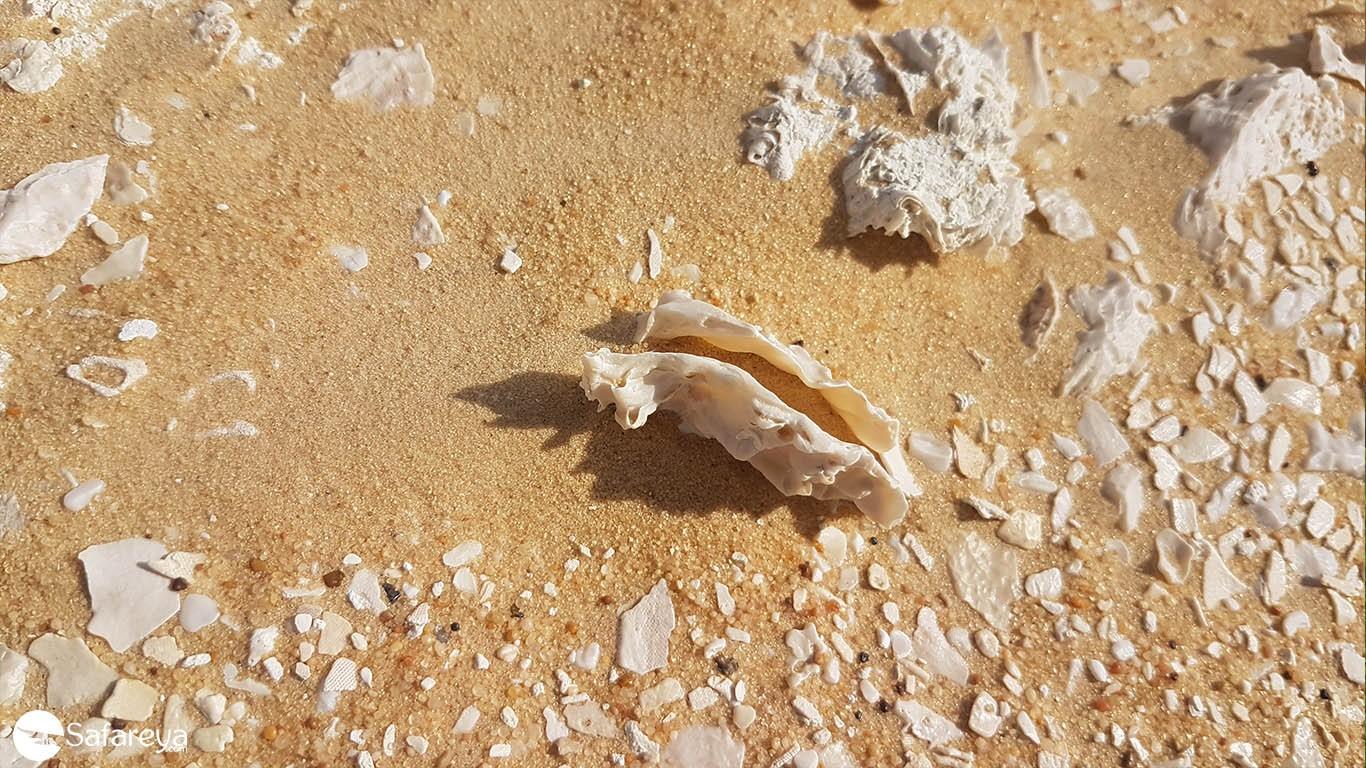
EID EL-SOLH
Siwa's annual fall harvest festival sees the people of the oasis gather at Dakrour Mountain to celebrate peace, harvest, and tourism for three consecutive days on the lunar nights of October. Yet for all its kumbaya vibes, Eid El-Solh was born as a solution to a years-long war between Siwa's eastern and western dwellers. Sufi Sheikh Muhammad Al-Madani gathered all the elders of the fighting tribes and told each to bring bread and break it; then, he mixed all the bread together and told them to eat. By doing so, each had eaten from his neighbor’s bread, and he told them they can fight no more after doing so. Like that, they reconciled and spent the night praising and praying to God. The tradition has since become an annual Siwan festival that people flock to join from across the country.
NATURE
Most people come to Siwa to get away from the chaos of city life and immerse themselves in some natural peace and quiet. Whether you’re hanging out in a natural hot spring or standing atop one of the mountains, you’ll bear witness to some of the most stunning sunsets in Egypt – to the point where Siwa has become known as Sunset Oasis (wahet el ghroob).
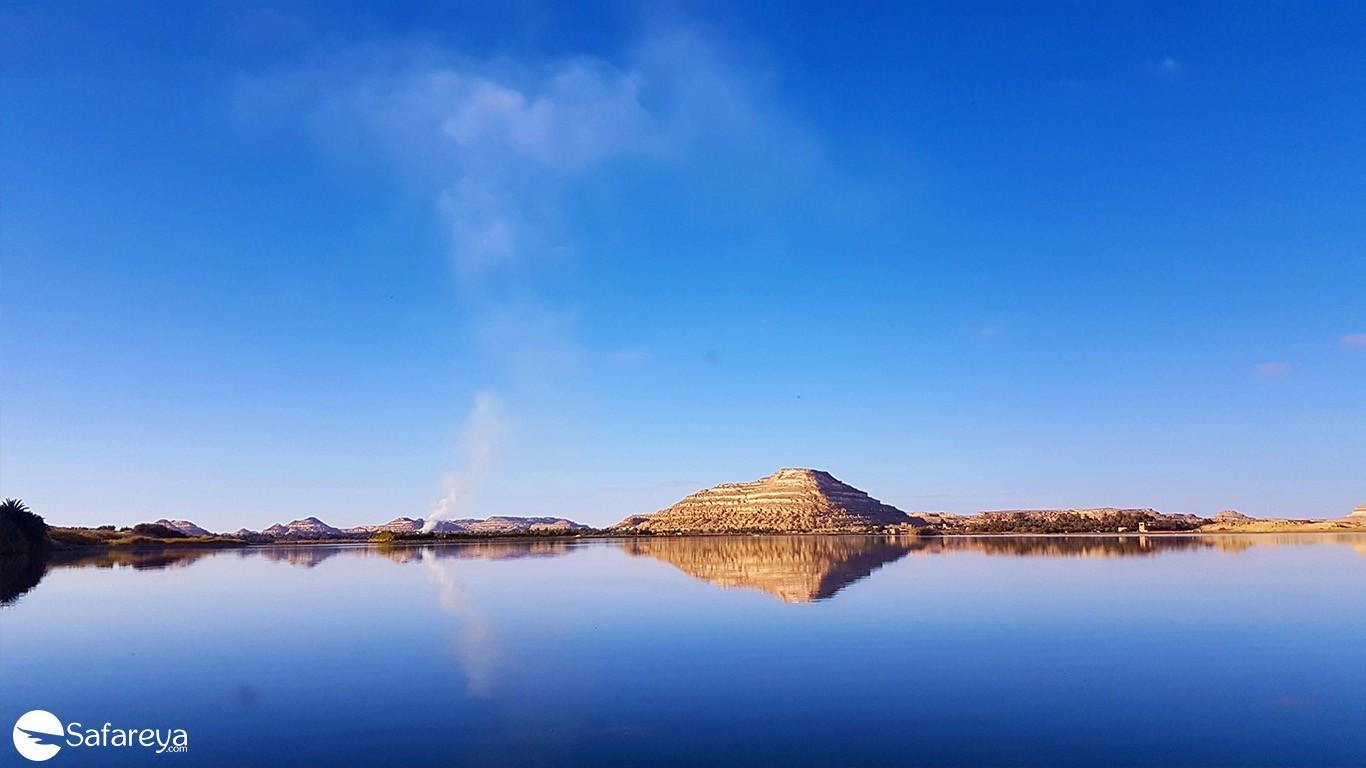
DAKROUR MOUNTAIN
One of the largest mountains in Siwa, Dakrour gets you a panoramic view of the entire oasis if you can climb to the top. It’s also one of the key spots in Siwa for natural therapy as a result of its hot sand, which is used to treat rheumatism, back pain, and skin disease. Heads up: there are no restrooms at Dakrour Mountain.
SALT LAKES

Forget the Maldives, Siwa’s the only place where you’ll find crystal clear turquoise waters surrounded by bright white salt crystals. You won’t be needing your floaties to swim in Siwa’s salt lakes because the ridiculously high salt concentration means you’re floating against your will either way. Siwa has four main salt lakes: Olive Lake in the east, Aghormi Lake in the northeast, Siwa Lake south of Shali, and Maraqi Lake also south of the oasis in Bahy el Deen. There’s also Fatnas Island 5 KM west of Siwa, situated between a hot spring and a salt lake. Heads up: there are no restrooms at the salt lakes.
BIR WAHED

This is the stuff of movies. You’re safariing your way through the desert and come by a cluster of palm and date trees; upon closer inspection, there’s a hot spring in there! A natural sulfuric hot spring, the water in Bir Wahed then runs beneath the sand for several kilometers before surfacing again as a freezing cold lake elsewhere in the desert. Make sure Bir Wahed is one of your stops during your desert safari – it’ll definitely be a highlight, and makes for some incredible photo ops. Heads up: there are no restrooms at Bir Wahed.
ABOU SHURUF SPRING
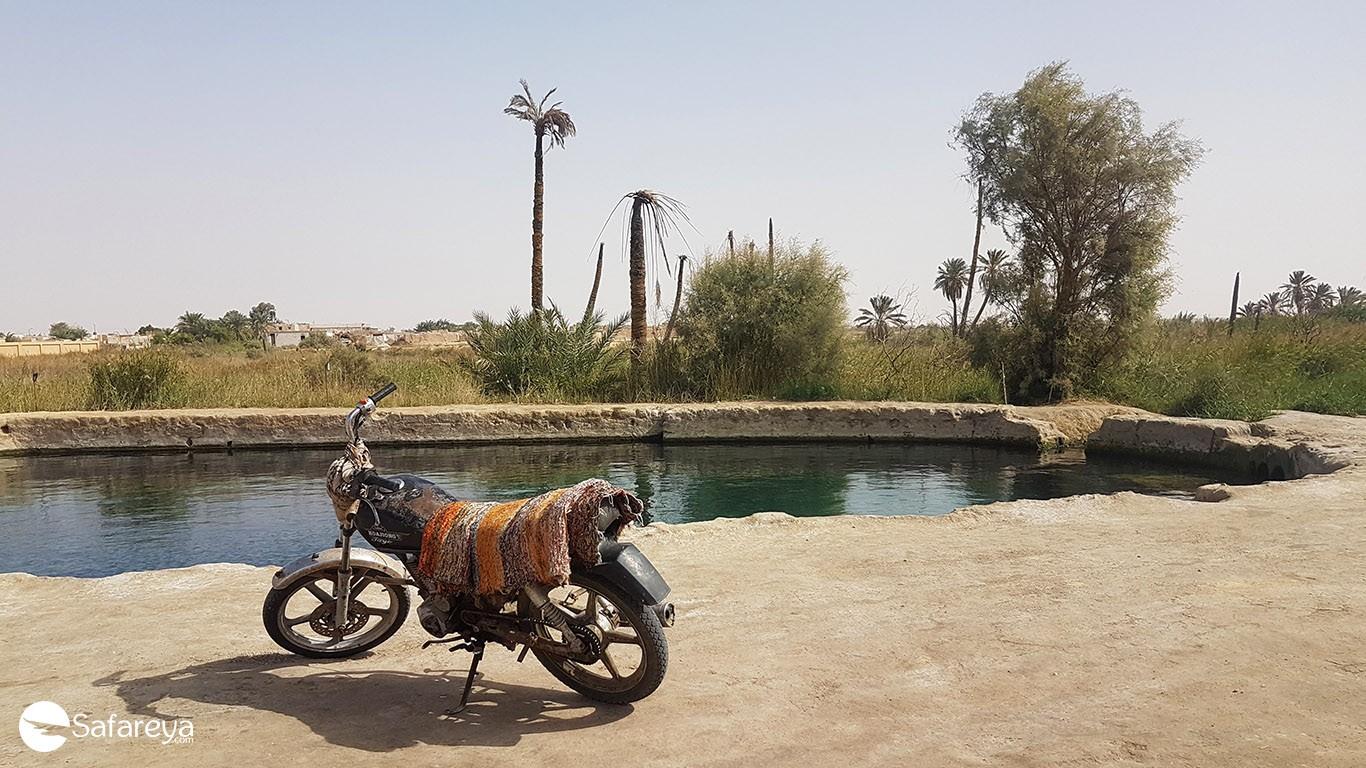
About half an hour away from downtown Siwa, this spring is situated on the side of the road and surrounded by nothing but stretches of road and a small bamboo hut where you can take shelter from the sun. Heads up: there are no restrooms at Abou Shuruf Spring.
CLEOPATRA SPRING

A few minutes from the Siwan core, Cleopatra Spring is one of the most frequented water springs in the oasis. A pool of stone filled with natural hot water, Cleopatra Spring is quite deep, so don’t cannonball in there unless you’re a good swimmer. There are also cafes and a bazaar around the spring for you to take a quick break between dips or sit and enjoy the view. You can find a restroom at Cleopatra Spring.
FATNAS ISLAND/FATNAS SPRING

One of the best places to catch the sunset in Siwa, Fatnas Island sits on a salt lake and has a hot spring inside the island itself. Even if you don’t end up going for a dip, you can grab a drink or a sheesha and sit down to take in the stunning view – especially as the sun sets. Fatnas is a fan favorite, so get there early if you want priority seating for the sunset. You can find a restroom at Fatnas Island.
TAGHAGHIEN ISLAND

A little over half an hour away from downtown Siwa, Taghaghien Island is one of the best spots to catch grab a drink and catch the sunset while surrounded by water on all sides; it's also home to Taghaghein Island Resort where you can stay while in Siwa. Since not everyone can stay at the resort at the same time, you can head over there and spend the day for 100 EGP, or just catch the sunset for 60 EGP. The folks at Taghaghein Island Resort can also facilitate kayaking trips around the island and other such little adventures.
LOCAL EXPERIENCES
SHALI SOUK
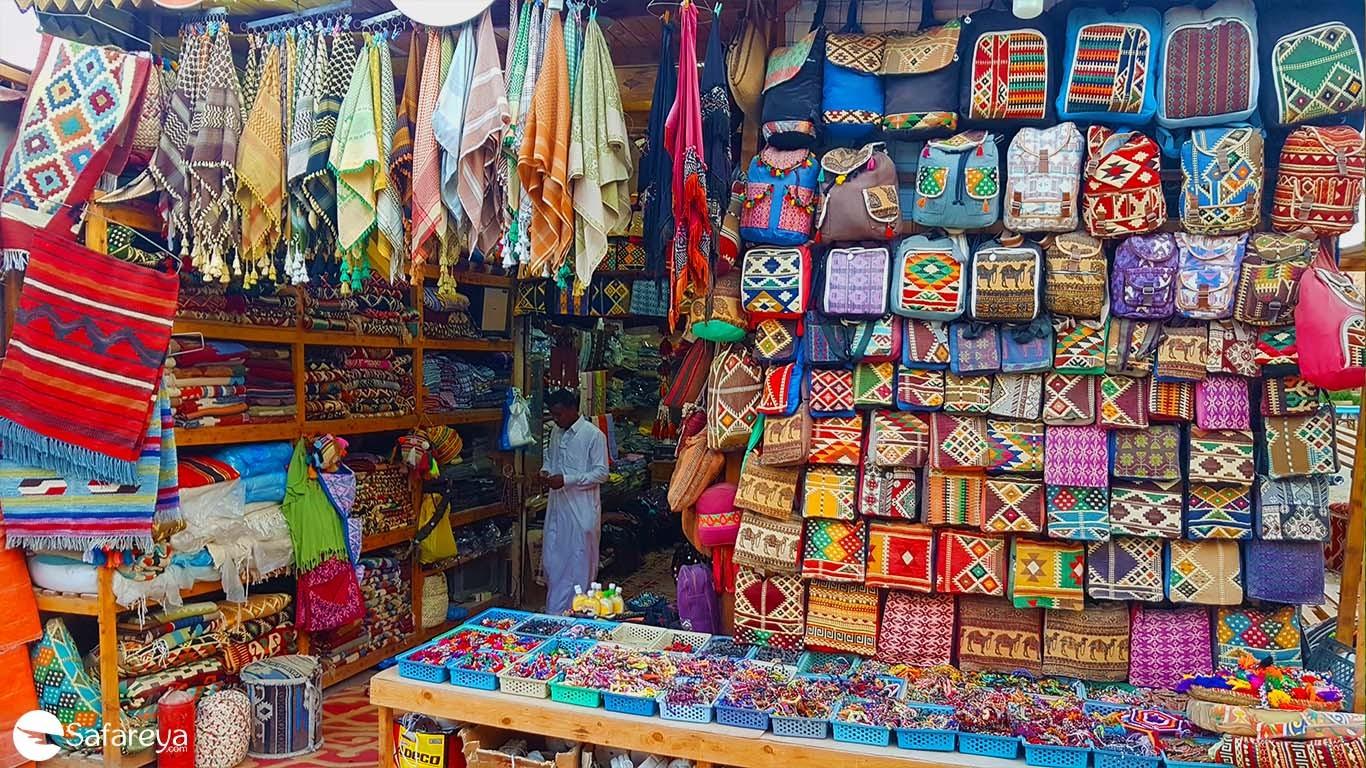
Now that you know all the adventures you’ll be getting up to in Siwa, you know you’ll want to take some of it home with you – for you, and for those friends you’ll be nagging about going to Siwa. The Shali Souq has everything from handicrafts to dates, olives, and jams as absurd (and delicious) as carrot and orange. Siwa is also known for its salt manufacturing, so you can buy things made of salt – lamps, decoratives, etc.
CAMPING IN THE DESERT
You have two options if you’ll be camping in Siwa; the first is in the middle of the desert with nothing more than tents and squatty potties (7amam baladi), the second is more of a glamping situation – a campsite set with tents, a kitchen, facilities, and sometimes a private hot spring. There are pros and cons to both options, and it comes back down to how much you’re willing to rough it.
Camps like Aly Khaled Camp have everything from food, drinks, and sheesha to restrooms and a private hot spring you can swim in at any time of night. They serve traditional Siwan food (go for the abu mardam or macarona garya).
With either option, you get the most stunning display of stars you’ve ever seen – you’re in an oasis, so there’s slim to no light pollution. It’s definitely worth bringing your camera and a tripod, or just wearing umpteen layers and lying beneath the stars for the night.
DESERT SAFARI
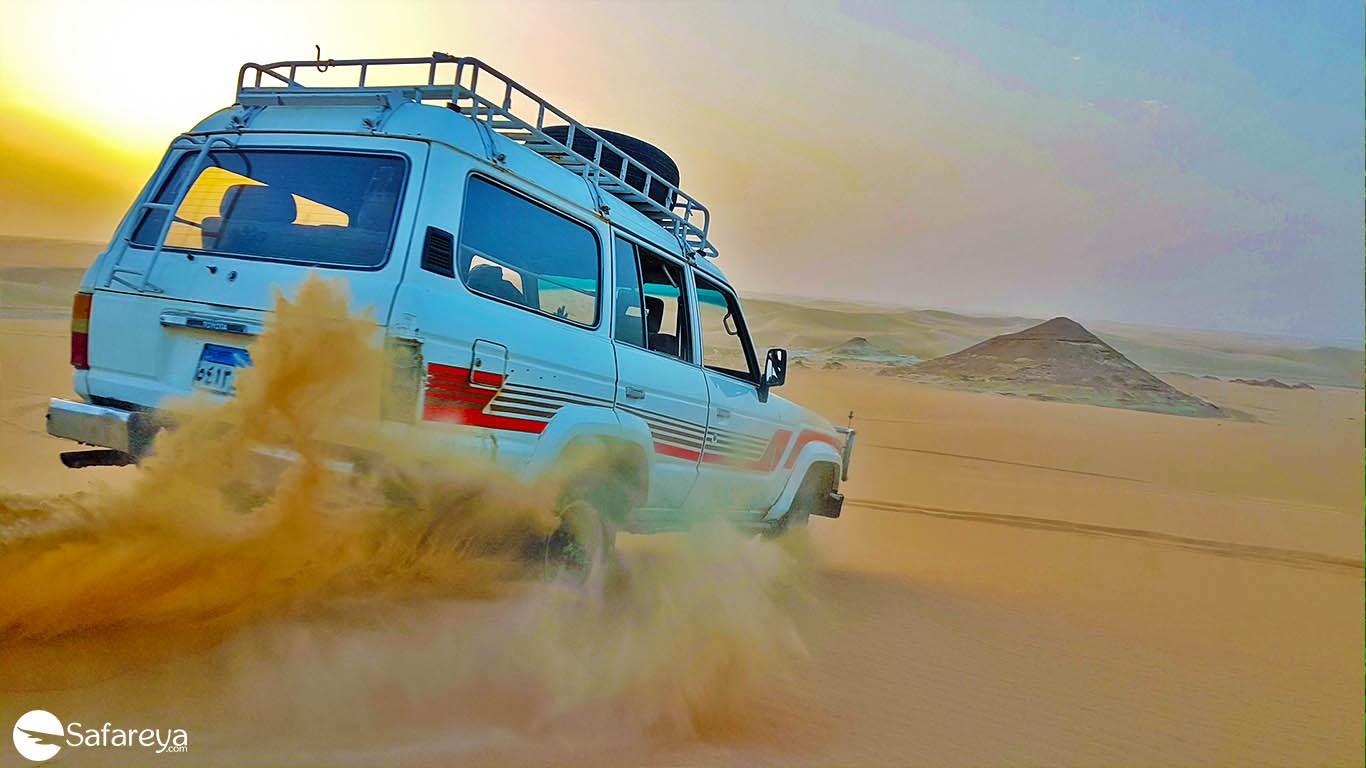
What’s there to do in a vast sea of sand? Plenty! Arrange with a Siwan guide who has a 4x4 and head out to explore the dunes of the Great Sand Sea, including places like Bir Wahed, the fossil site, and a camp where you can enjoy an abu mardam meal in the desert with some Siwan tea. To head into the desert you’ll need an army permit; it costs 50 EGP per person, plus a permit for the vehicle and driver for 100 EGP. You’ll need to give a copy of your ID to your safari guide in advance and they’ll handle the process.
SIWAN GATHERING Siwans know how to throw a party, no matter the occasion. Bring them together with a drum or two and you’ll get an incredible jam session with people dancing their hearts out. It helps that Siwans are generally a joyful bunch, so everyone’s ready to sing, dance, and create a festive atmosphere. They also don’t take ‘no’ for an answer, so be ready to dance like nobody’s watching. How do you join a Siwan gathering? You can start by asking your guide to facilitate this for you, or you can find groups gathered in camps or at certain restaurants at night.
TOURIST TRAPS
ROMAN TOMBS
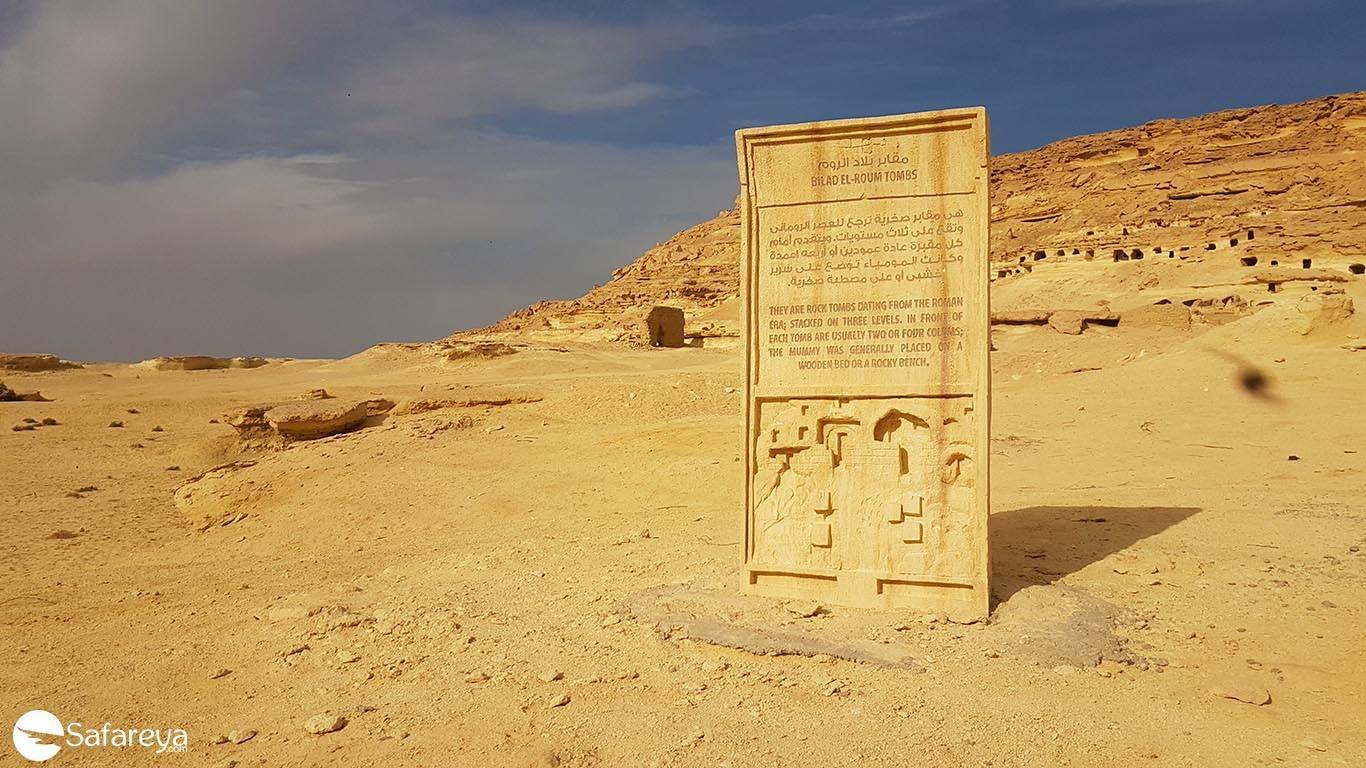
This rocky hill is supposed to be the site of tombs from the time of Roman rule, but what remains are caverns engraved atop the hill – the entrances to the tombs – but there’s nothing inside these caverns but empty snack wrappers. The view from atop the hill isn’t bad, but Siwa definitely has better.

Siwa isn’t lined with restaurants around every corner, but the few that exist offer both regular Egyptian food as well as particular Siwan dishes. Restaurants like Abdu, Nour El Waha, Siwa Restaurant, and Ali Elewa all have excellent food at very reasonable prices; for example, 100 EGP can get you half a chicken, rice, fries, salads, and a soda.
Abdu is the go-to breakfast joint if you’re staying near the downtown area and aren’t in the mood for hot bread from the bakery and freshly made falafel from the nearby falafel joint. We suggest starting your morning with Siwan tea and their yogurt with honey and bananas dish – it may sound like something simple you can make at home, but all of their ingredients are incredibly fresh, so it’s a refreshing morning meal. At any other time of day, we recommend any of their couscous dishes (there’s veggie, chicken, or meat), fried chicken, and date pancake. They also serve an incredible Siwan molokheya.
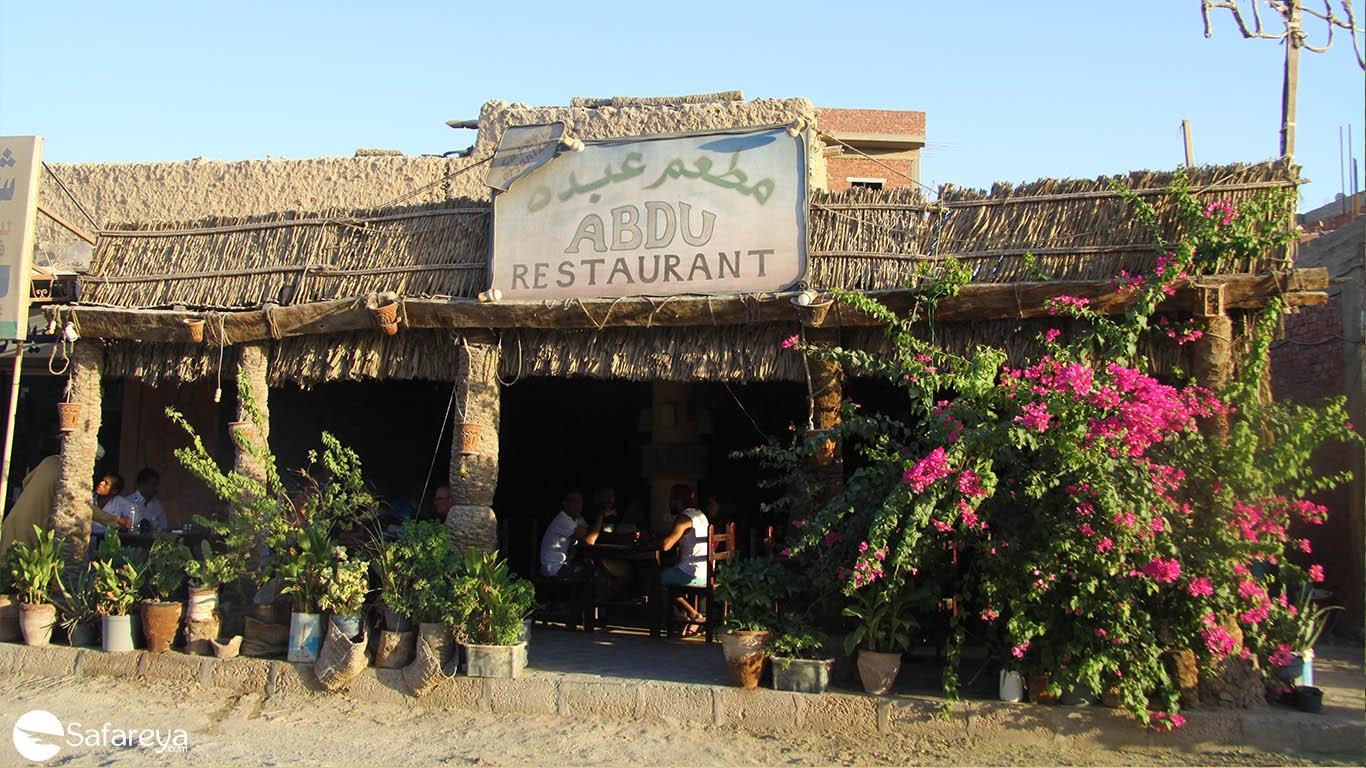
Kenooz is a stunningly serene rooftop restaurant inside Shali Lodge that serves breakfast jams you can’t find elsewhere in Siwa. While olive jam is a Siwan staple, Kenooz also serves a unique carrot jam and orange jam that are alone worth making the trip. If you’re headed to Kenooz for lunch or dinner, the basil pasta is surprisingly delicious, and their olive chicken and romaneya are classics not to be missed.

But what do the people of Siwa eat that’s different than the rest of Egypt? And where do you find it? The most prominent Siwan food that you can find in most restaurants is called abu mardam, which refers more to the cooking style than to the food itself. Chicken and steak can be cooked abu mardam style, which means they’re marinated for a good eight hours, put in an iron pot, then buried under the sand and left to cook. You can get your abu mardam in most places in Siwa, though it definitely tastes best at a desert camp after a long day of safari adventures. If you’re staying inland, head to Ali Elewa Restaurant for your abu mardam chicken, meat, or duck for anywhere between 45 – 100 EGP for a full meal. Dress comfortably; you’ll be sitting down on the floor around your table to share the meal.

Abu mardam chicken, alongside some SpongeBob and Winnie the Pooh for good measure.
There are plenty of other Siwan dishes to try, but you’d be hardpressed to find them in any restaurant. Your best bet is to get them made to order, usually homemade with plenty of love. That said, you’ll need to you’re your guide (or whoever’s setting this up for you) about two days’ notice so they have ample time to prepare the food. You should also know that they make food in rather large portions; have enough people to share the food – and the cost. What’s there to try?
Macarona garya: a tajin of pasta swimming in tomato sauce, with chicken or meat cooked in the tajin Siwan shakshuka: steak or liver with onions, vegetables, tomatoes, and eggs Rokak: layers of philo dough, usually served during Eid El-Adha Igharin: purslane and beans, topped with olive oil and eaten with bread Meknaf and rokak: sweets made for feasts and festivals Ashngut: duck or chicken with eggs, wrapped in bread and rokak; usually served for newlyweds Mafkad: traditional Egyptian fattah but served without the rice Tarfent: bread, dates, and olive oil Angel: bread drizzled with date juice Makhmakh: a plant cooked similar to molokheya (Jew’s Mallow) and served with veal Basees: sweets made of crushed dates or dry hummus with sugar Tankotaat: dough-based breakfast dish served to the families of newborns during the child’s first seven days

You’re already quite literally in an oasis, so any day trips beyond Siwa would be primarily desert safaris. However, just 75 KM northeast of Siwa is another oasis named Qara. What’s different about it is that, with a population as small as 500 people, Qara Oasis still runs without any of the modernity found in Siwa – that includes electricity. This quick getaway will give you an idea of what Siwa looked like before it became a tourist hotspot.

FEMALE-FRIENDLY
You’ll be quick to notice that most of the people walking around in Siwa are men. Where did all the women go? Siwa’s traditionally conservative culture entails that women are either homemakers or work in handicrafts, which is work done either at home or in designated factories. In spite of this, Siwa remains incredibly safe for females as the locals are respectful, helpful, and just all-around awesome people. Also, since Siwa’s a tourist destination, they’re accustomed to people walking around wearing whatever they please.
FAMILY-FRIENDLY
Siwa’s a giant outdoor playground for adults and kids alike, so it’s a pretty good place to introduce your kids to nature and adventuring in the great outdoors. There’s plenty to do in terms of activities – safaris, swimming, exploring – and they’re all good for families. The only downside is that you’ll often need to answer nature’s call in nature itself, which is a bit of a hassle if you have younger children. You’ll also spend a few days de-sanding your children, but that’s practically a childhood rite of passage.

Ambulance: 123 Fire Department: 180 Tourist Police: 126
Siwa Central Hospital
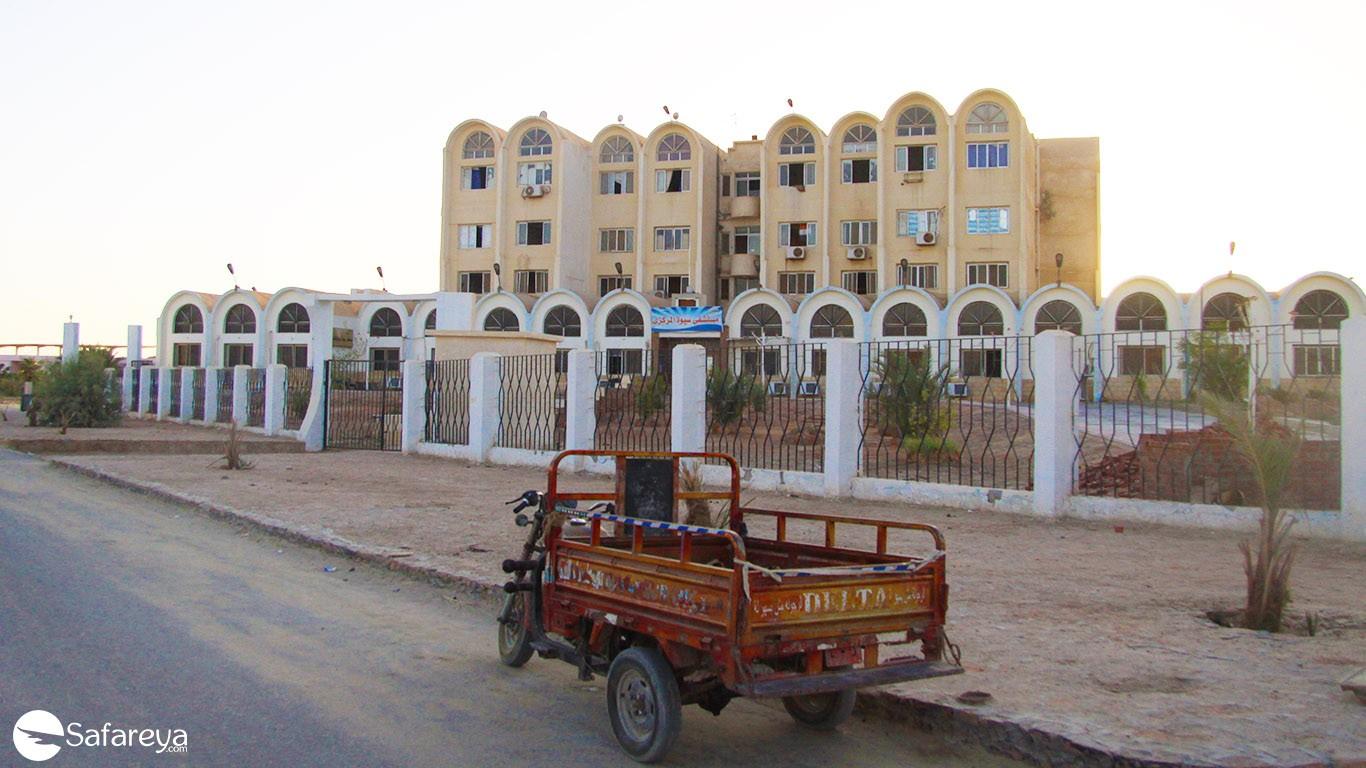
Location: El-Raml Street Contact Number: 0464600459 Hours of Operation: 9 AM to 2 PM (24-hour emergency services)

BANQUE DU CAIRE

Location: El-Tekeya, next to Siwa Oasis police station Contact Number: 16990 Hours of Operation: 8:30 AM – 2 PM (Sunday – Thursday)

There will be blood. Mosquitos come out to play at night in Siwa and are vicious; in the morning, the flies take over – they’re equally annoying. Bring ample insect repellant, and some after-bite cream for when the repellant fails you. Do NOT open your windows at night.
Take two copies of your ID (front and back), which you’ll need for accommodation and if you plan on going on safaris. No matter what time of year it is, take heavy clothes for nights and light ones for mornings. There isn’t much reception in the desert surrounding Siwa, so if you’re planning on going on a safari, inform your loved ones lest you find the police searching for you.
No matter what time of year it is, take heavy clothes for nights and light ones for mornings.
There isn’t much reception in the desert surrounding Siwa, so if you’re planning on going on a safari, inform your loved ones lest you find the police searching for you
Siwa has markets with all types of foods, non-perishables, and an abundance of bottled water, so there’s no need to worry about bringing any of that stuff along. You’ll also be able to buy credit for your phone, and mobile accessories for those who tend to forget their chargers, but there aren’t any camera accessories – come prepared with those.
If you don’t bring a bathing suit you’ll be swimming in your underwear; good luck trying to buy a bathing suit somewhere in Siwa.
Drink some Louisa (brewed lemongrass), which is particularly helpful to those with tummy trouble.
Bring cash; the only available ATM is at the Bank of Cairo, and you’ll be spending your cash quickly if you make it out to one of the souqs – you may find yourself purchasing your weight in dates, olives, and all sorts of jams.
Time your trip between October and March to avoid sweltering desert weather, and avoid Siwa during Ramadan because, due to the highly religious nature of the Oasis, it practically shuts down throughout the entire month.
The best places to watch the sunset from are Dakrour Mountain, Fatnas Island, Taghaghein Island, and Talist Siwa Learn a thing or two in Siwan slangTop of Form





